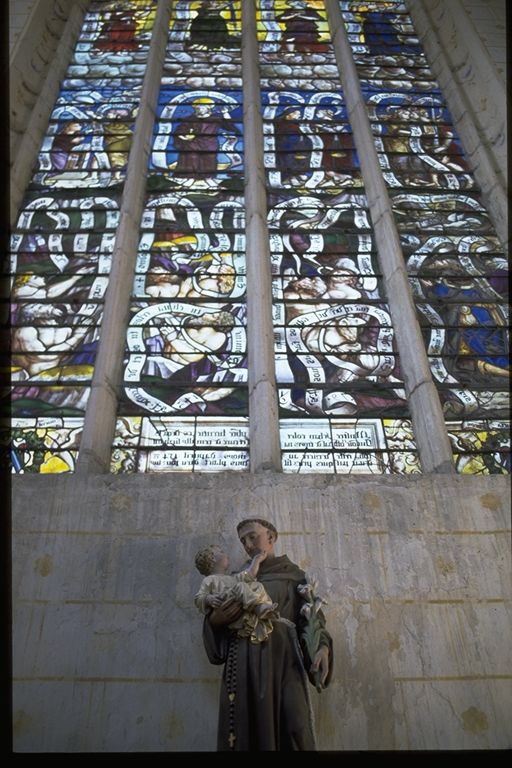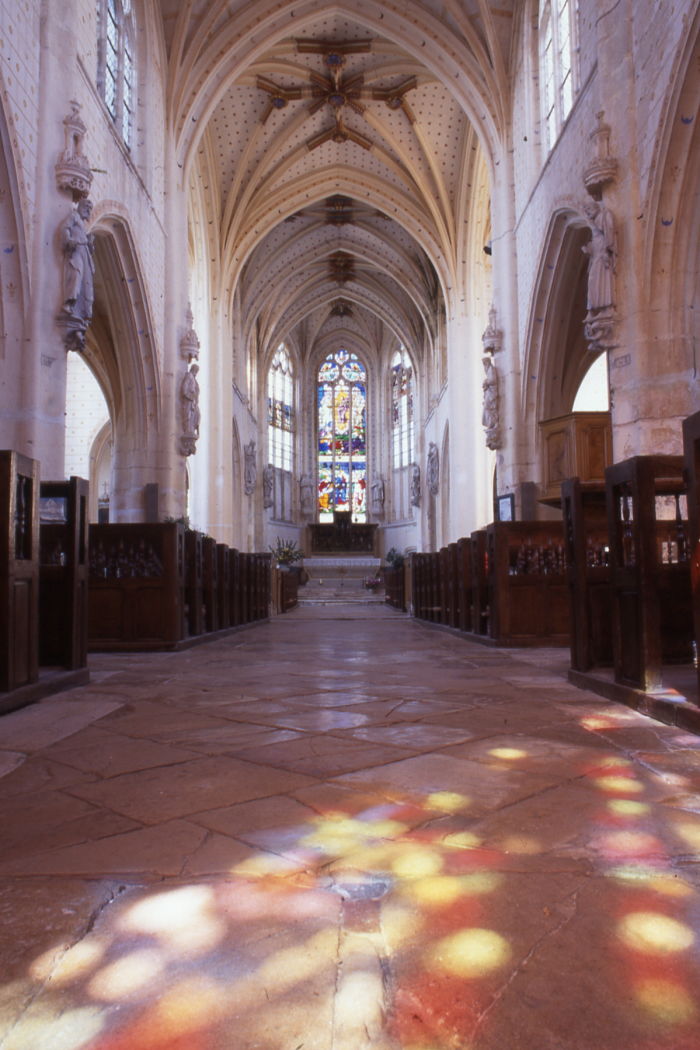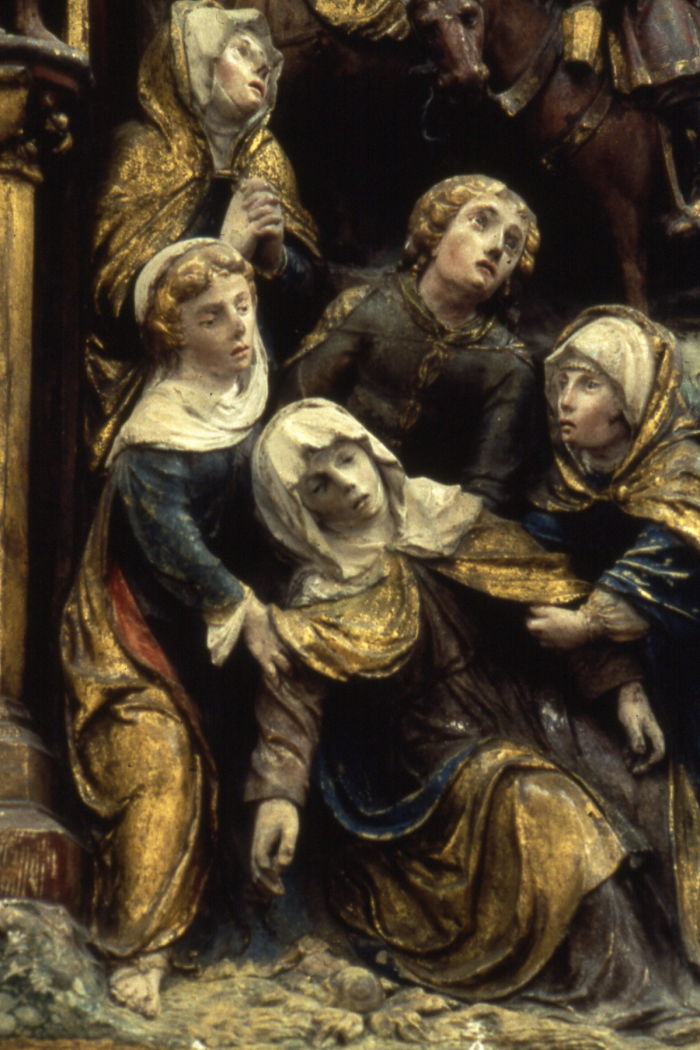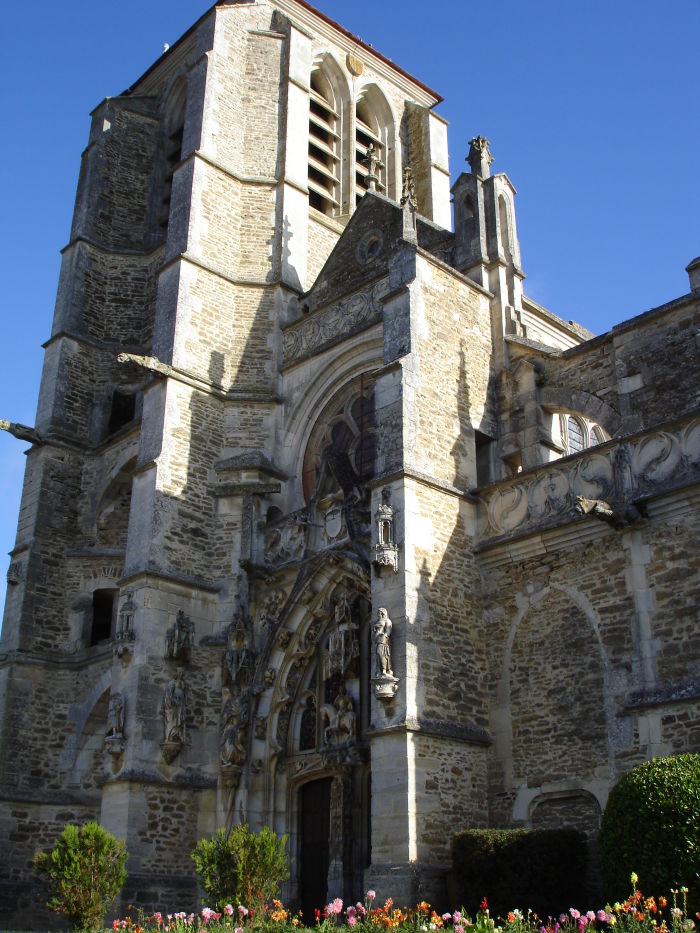Rumilly-lès-Vaudes
| Address |
|---|
|
Eglise Saint-Martin |
After the Hundred Years War, the village of Rumilly-lès-Vaudes, hitherto located on the "main road" (Troyes road in Dijon today), ruined, moves 3 km away, near the Hozain , at the edge of the forest. Jean Colet, newly appointed to the cure, canon and official of Troyes, plans to build a new church for the new village. He secured the support of Bishop Odard Hennequin (and his architect) who from Senlis arrived in Troyes; he took advantage of the bubble of indulgences obtained in Rome in 1493 by his brother Jacques parish priest of the old church, to obtain the necessary funds for his project.
In 22 years, from 1527 to 1549, the new building goes up. It was endowed with a campanile raised on the transept which will be shot down by a storm in 1739, raised, then again eliminated by a fire in the year VI (1798) which destroyed the whole of the roofing. Despite the restorations that followed, it still keeps track of this latest disaster. Built on an almost rectangular plan, it extends its 38 m by 18 in width and 13 m in height for the vault of the central nave. There are still 12 altars, a main altar and eleven in the lateral bays. The facade is reminiscent of the cathedral of Senlis: open tympanum, rosette (rebuilt in 1744) two equestrian statues of St. Martin, two Annonciations (those of the new church and those saved from the one that preceded it), angels musicians, and what remains of the galleries of the two floors after the fire of year VI. On the east side, many gargoyles, beautifully worked occupy two levels of the building: clawed, winged, mouths wide open.
At the head of the building, an engraved stone recalls the date of 1527, in August, when was laid "the first stone. Again, facing the entrance, it is necessary to notice the "door of the baptism" and the shell of the pilgrims of Saint-Jacques-de-Compostelle. The interior appears immense with the statues of the twelve apostles leaning against the pillars, dais above their heads, two angels at their feet with the cross of consecration. The windows are spread over two floors; some date from the sixteenth century, sometimes mutilated or restored. The window of the southern transept, known as Saint Jean, is a real "misterium" fixed on glass, on three levels, as on the "scaffolds" of the Middle Ages, on the portal of the churches. A fourteenth-century Madonna of wood faces a Saint Anne of the same type. Behind the main altar (middle of the eighteenth century like all the furniture and side altars), the altarpiece of the Passion, in three paintings: Carrying Cross, Crucifixion and Resurrection, polychrome stone, in the round, 70 characters, figures exceptional realism, all in a rare perspective in similar works. This is certainly the centerpiece of Jean Colet's church.
Last updated on 14/07/2022 - Office de Tourisme de la Côte des Bar en Champagne








